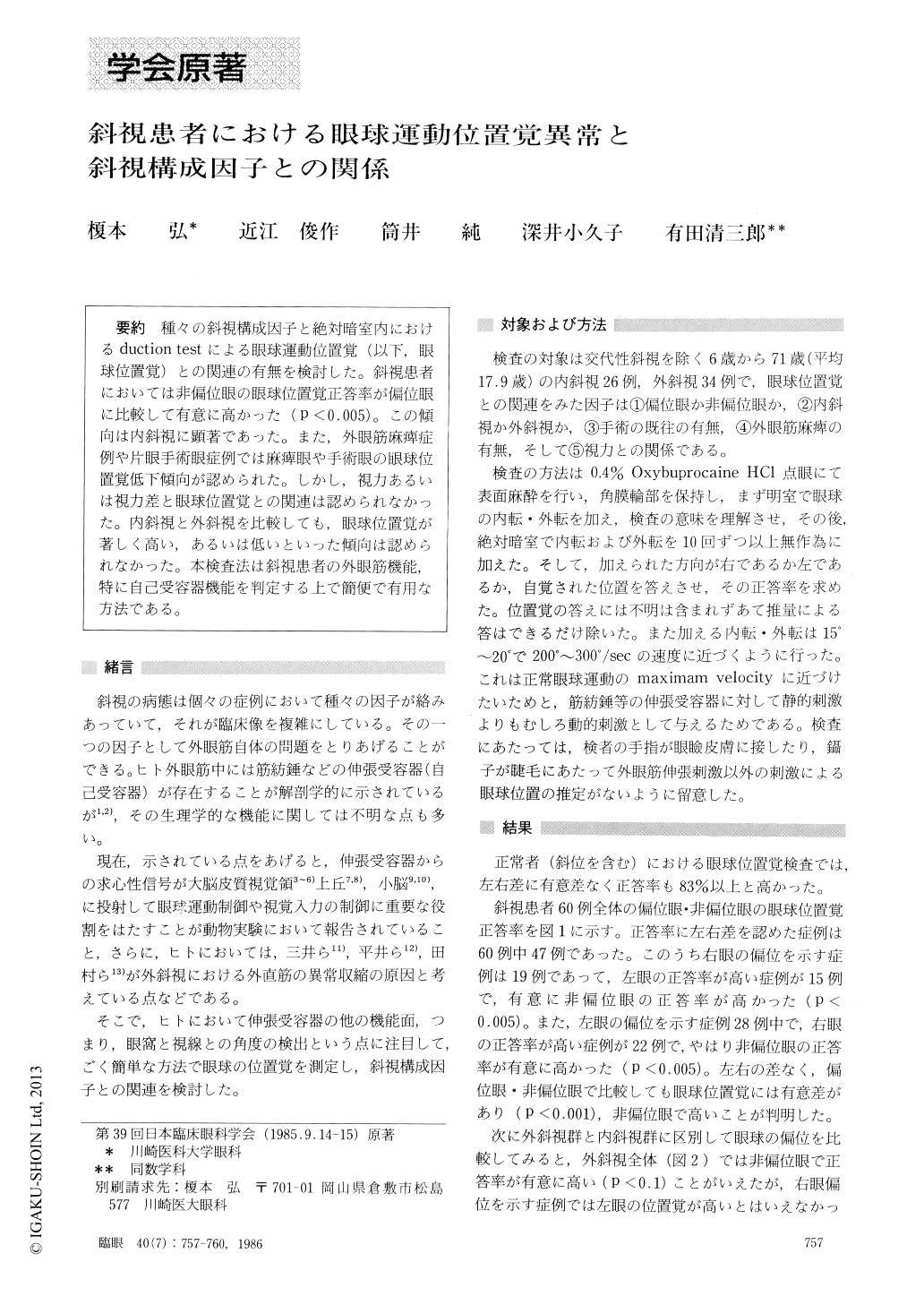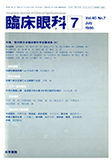Japanese
English
- 有料閲覧
- Abstract 文献概要
- 1ページ目 Look Inside
種々の斜視構成因子と絶対暗室内におけるduction testによる眼球運動位置覚(以下,眼球位置覚)との関連の有無を検討した.斜視患者においては非偏位眼の眼球位置覚正答率が偏位眼に比較して有意に高かった(P<0.005).この傾向は内斜視に顕著であった.また,外眼筋麻痺症例や片眼手術眼症例では麻痺眼や手術眼の眼球位置覚低下傾向が認められた.しかし,視力あるいは視力差と眼球位置覚との関連は認められなかった.内斜視と外斜視を比較しても,眼球位置覚が著しく高い,あるいは低いといった傾向は認められなかった.本検査法は斜視患者の外眼筋機能,特に自己受容器機能を判定する上で簡便で有用な方法である.
We evaluated the ability of spatial orientation, or proprioception, for passively induced eye movement in 26 esotropic and 34 exotropic subjects of various ages. After surface anesthesia, eye movements were induced by forced duction with forceps in total darkness. The amount of induced eye movement ranged from 15 to 20 degrees. The velocity was set between 200 to 300 degrees per second. The passive eye movement was repeated ten times or more for each horizontal direc-tion, during which the patients were asked to tell the direction of the movement.
Normal subjects, including heterophorias, consistent-ly responded with the score of correct answer at 83% or more.
Strabismic subjects gave significantly poorer scores. This phenomenon was more pronounced in esotropic than in exotropic subjects. Consistently lower scores were obtained when the forced duction was applied to the deviating than to the non-deviating eye. Eyes treat-ed by unilateral strabismus surgery showed decreased spatial orientation when compared with the non-operat-ed fellow eye. The ability of spatial orientation was independent on the visual acuity of the involved eye.
Rinsho Ganka (Jpn J Clin Ophthalmol) 40(7) : 757-760, 1986

Copyright © 1986, Igaku-Shoin Ltd. All rights reserved.


